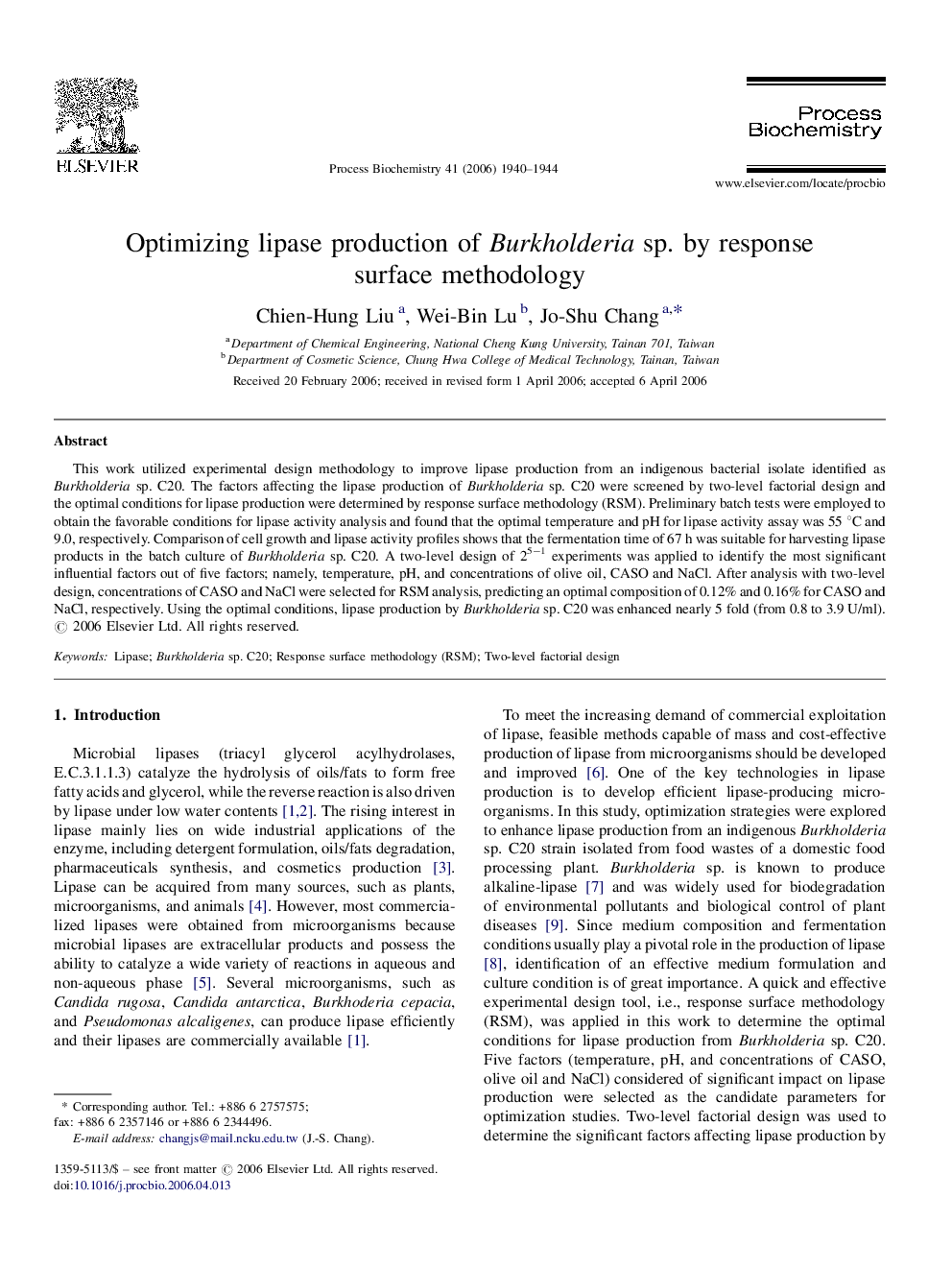| Article ID | Journal | Published Year | Pages | File Type |
|---|---|---|---|---|
| 36042 | Process Biochemistry | 2006 | 5 Pages |
This work utilized experimental design methodology to improve lipase production from an indigenous bacterial isolate identified as Burkholderia sp. C20. The factors affecting the lipase production of Burkholderia sp. C20 were screened by two-level factorial design and the optimal conditions for lipase production were determined by response surface methodology (RSM). Preliminary batch tests were employed to obtain the favorable conditions for lipase activity analysis and found that the optimal temperature and pH for lipase activity assay was 55 °C and 9.0, respectively. Comparison of cell growth and lipase activity profiles shows that the fermentation time of 67 h was suitable for harvesting lipase products in the batch culture of Burkholderia sp. C20. A two-level design of 25−1 experiments was applied to identify the most significant influential factors out of five factors; namely, temperature, pH, and concentrations of olive oil, CASO and NaCl. After analysis with two-level design, concentrations of CASO and NaCl were selected for RSM analysis, predicting an optimal composition of 0.12% and 0.16% for CASO and NaCl, respectively. Using the optimal conditions, lipase production by Burkholderia sp. C20 was enhanced nearly 5 fold (from 0.8 to 3.9 U/ml).
